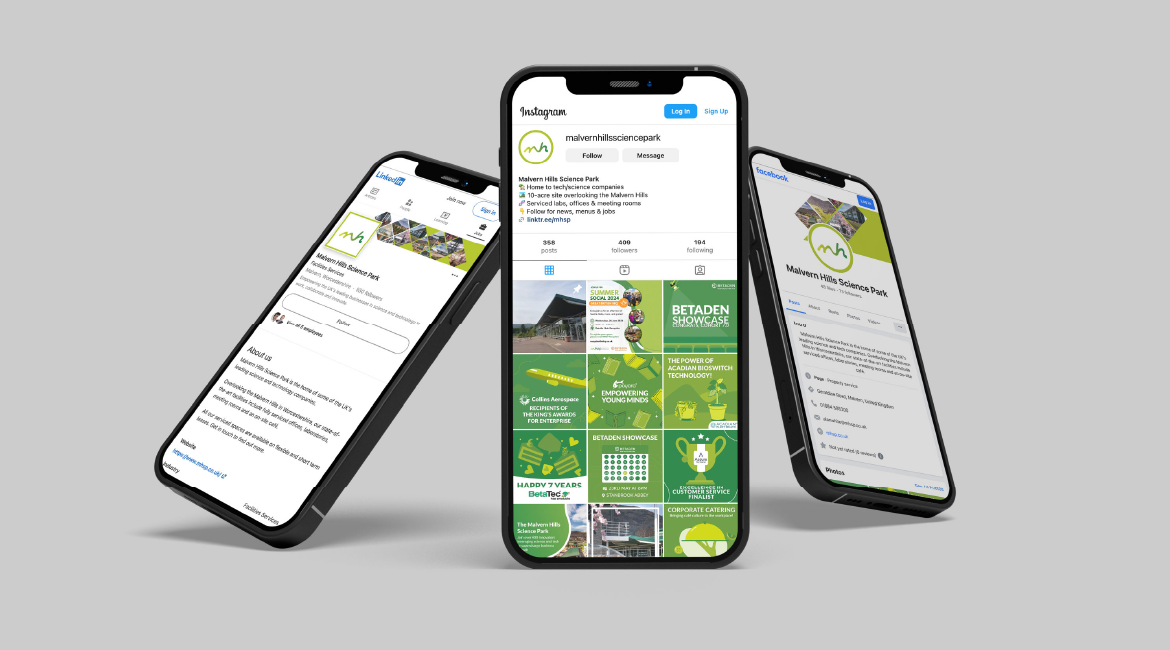How to advertise a new website launch in style

We offer insights and solutions IN WEBSITE DESIGN, BRANDING & DIGITAL MARKETING
September 30, 2021
6 Mins
Don’t just do the obvious. Learn how to advertise a new website launch in spectacular fashion with these five unique ideas.
The launch of a new website is a big deal. However, if you want to fly out of the blocks and generate a buzz around your fresh online look, you need a plan of action.
Unfortunately, SEO can take a while to kick in. So, if you don’t follow a clear communication strategy for the launch of your new website, it’ll be like being marooned on an island in an expensive tailored suit. Yes, you’ll look like the bee’s knees, but nobody will see, hear or care.
The idea of this blog is to provide some quick and fun best practices for launching a new website. Get this right, and it’ll give you a springboard to start recuperating some of your investment immediately.
How to advertise a new website launch
#1 Bypass social algorithms
Whether you publish a social post on Facebook, LinkedIn or Instagram, the launch of a new website is only likely to reach the people who already know your business.
While there’s always value in upselling and improving the customer journey, it will rarely broaden your reach to new prospects or markets.
A few years ago, a single company post on social media may have worked quite well, especially if you’ve accumulated a strong following.
However, with the engagement rate on popular channels like Facebook averaging 0.09%, there’s a good chance your big announcement could miss the mark.
The key is to turn your social pages into communities. It’s a hard nut to crack, but if you can encourage people to join the conversation, you’ll generate a larger engagement rate and extend the announcement of your new website to a wider audience.
To do this quickly, we suggest making the launch about the user. Don’t waffle on about what you’ve created. Mention why it looks like this and how it benefits new and old users.
Back this up by running a competition. For example, you can ask your followers to share the website launch post for a chance to win a product or service. After all, who doesn’t love a freebie?
If you don’t mind spending a little bit, use social advertising to target new potential customers. You can even build lookalike audiences based on your old website visitors. This handy tool featured on Facebook Ads and LinkedIn Ads will then show your new website launch post to people with similar traits, habits and interests as your website visitors. Clever, huh?
#2 gamify your new website launch email
If you want to know how to advertise a new website launch on a budget, look no further than email marketing. Industry research suggests that the cost of sending an email is only £0.003.
Yet, email marketing is also a crowded marketing channel, with over 300 billion emails sent worldwide, per day. Even if you have a substantial email list, you still need to pique the curiosity of your audience.
One of the most interesting ways to achieve this and add a share ability factor into the mix is to gamify your new website launch email.
Google ranks websites higher when it sees an influx of traffic visiting and staying on it for longer periods.
A good way to keep people looking around your site is to add a secret image, question or “Easter Egg” for email subscribers to find. In exchange, you can reward them with a free service/product or a gift.
It’s a fun and engaging way to turn the launch of a new website into a party game!
#3 launch with content
There’s nothing more infuriating than clicking on the blog or news section on a new website design, only to be greeted by “Coming soon” or only 2-3 sporadic posts.
The launch of a new website needs to feel fresh and rewarding. Unseen, thought-leadership content is an ideal way to attract more visitors and keep bounce rates super low.
Remember, not everyone will see your big reveal organic social posts or email. Although, this isn’t an excuse to keep reposting the same tired message.
Having a bank of quality blog articles will give you another reason to get people on your new website. Sure, it might not be direct. But with the right links on the blog, there’s no reason why new and old customers won’t take a nosy around at the rest of the site.
Top tip: To begin with, focus on FAQ blogs. This method will turn first-time site visitors, sceptics and previous customers into fans. After all, you’re adding value and feeding their curiosity. A good place to start is to use answerthepublic.com. You can use it to turn a few keywords into a list of long-tail keywords, including questions.
#4 collaborate with your community
As we mentioned earlier, collaboration is an essential part of building an engaged audience on social media. When you start drafting an organic social post, make use of your “digital” black book of contacts.
• If you’re based in a business park, see if they’re willing to share your post. At the end of the day, you’re advertising their site!
• Make use of your personal LinkedIn account. But instead of just sharing the new website launch post, add a few lines of commentary. The key to LinkedIn is to make it personal and authentic. Storytelling will always outperform sales-focused posts. So, if you played a role in the content or managed the design on the site, mention how proud you are to be a part of the process.
• Write a guest blog for a stakeholder or client. If the content doesn’t contradict their service offering, it’ll be in their best interest to promote your website. You can then piggyback off their following and traffic.
#5 a powerful new website launch press release
No points for originality here. Yet, there is a way of maximising exposure and minimising costs with press releases.
Generally speaking, the more you pay, the more likely you are to feature on a bigger site. Although, we highly recommend that you avoid press release distribution services. Sadly, they will often push the news story to fake sites, which offer brilliant click-throughs, but a dreadful return on investment.
You need the right type of people looking at your site, even if they’re not ready to make a purchase.
For distribution to the correct audience, try using the following methods:
• Speak to local journalists – You can find their details on newspaper websites or LinkedIn.
• Check industry-specific publications – Look at WHSmith and Webwire.com for trade publications and magazines. In most cases, you can contact the editors directly.
• Contact industry experts – On most established websites, you’ll find guest bloggers providing thought-leadership pieces. Contacting these people is a perfect place to start.
Distribution aside, you must always invest in the quality of the written content. It doesn’t matter how amazing your distributor is, if your PR content is dreadful, they’ll reject it.
A new website launch press release needs to follow a certain structure and tap into the core fundamentals of storytelling. Otherwise, it’ll get rejected. The structure includes:
• The intro – Get everyone hooked.
• Source – Tell the audience how you know about this new site.
• Essential details – Explain why the story is meaningful and significant.
• Quotes – Give the press release credibility and life with quotes.
• Concluding points – Add parting facts and link back to the website.
You should also bear in mind that writing a press release is very different to standard copywriting principles. With this style of copy, you’re writing from a journalistic viewpoint, keeping the topic neutral. There are no first-person pronouns here unless it’s a quote.
It’s time to launch your new website in style
Now you know how to advertise a new website launch, it’s over to you to create the assets. If you need a hand delivering any of the above, Design in the Shires is here to help.
Our results-driven creative agency covers everything from website design and branding to full digital marketing services.
To find out more, get in touch with our team today.























